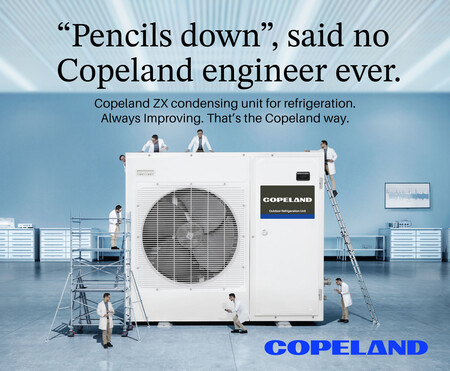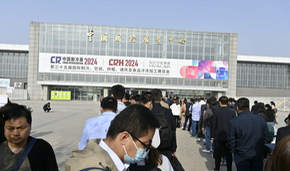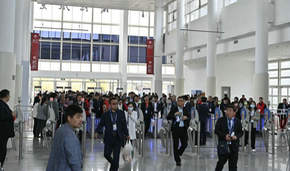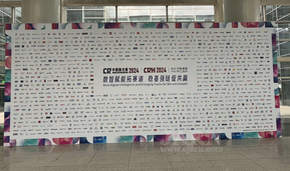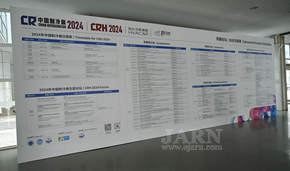Kimura Kohki Creates Comfortable Air Conditioning Spaces
2018-04-27
Years ago, air conditioning systems made users feel cold at the level of their feet during heating operation in winter, and made them feel a hot flush in their face during cooling operation in summer. To solve these problems, manufacturers have adopted a method to even out the room temperature by increasing the discharge air speed and stirring the room air. However, the more powerful air draft generated an extremely unpleasant sensation, particularly among sensitive users such as female staff in offices, patients in hospitals, and elderly persons in care facilities. Over 10 years ago, chilled beam systems, an air conditioning system widely used in Europe, arrived in Japan. The chilled beam supplies chilled or hot water to the room and radiates cold or heat to the air from the heat sink. The system was immediately accepted in Japan as a comfortable air conditioning system. However, chilled beam systems penetrated the market to a limited extent because of several drawbacks, such as the high cost of piping installation work, low cooling capacity that is produced only on the area in contact with the water piping and heat sink, dew drops formed by low-temperature cold water, and especially the risk of water leakage in and from the ceiling.
Over 10 years ago, chilled beam systems, an air conditioning system widely used in Europe, arrived in Japan. The chilled beam supplies chilled or hot water to the room and radiates cold or heat to the air from the heat sink. The system was immediately accepted in Japan as a comfortable air conditioning system. However, chilled beam systems penetrated the market to a limited extent because of several drawbacks, such as the high cost of piping installation work, low cooling capacity that is produced only on the area in contact with the water piping and heat sink, dew drops formed by low-temperature cold water, and especially the risk of water leakage in and from the ceiling.Starting five years ago, several manufacturers including Kimura Kohki have introduced air-supplied radiant air conditioning systems, which transform cold or hot air, whether the air is produced by chilled water systems or direct expansion (DX) air conditioning systems, into radiant cold or hot heat at the diffuser. As a result, they have reduced the installation cost to that related to duct work alone.
Since these systems can produce the radiant effect over the entire ceiling panel, the radiant cooling capacity has improved significantly. These systems can prevent dewing by discharging air at a higher temperature than the dew point temperature, by inducing heated room air and reheating it when the discharge air temperature from the ceiling-concealed indoor unit drops below the dew point temperature. This mechanism realizes a larger difference in the temperatures of the intake air and discharge air, leading to a reduction in fan power requirement of about 30%. And of course there is no leak-age of water in the ceiling. Thanks to these excellent features, radiant air conditioning systems are now carving out a share of the Japanese market.
Kimura Kohki carried out a two-week performance test of its products for space heating operation in Kushiro City, Hokkaido, an extremely cold area in Japan. At the units and 226 Air Beam radiant and laminar air flow units.
 The measurement results on January 25 at outdoor temperatures ranging from –3 to –7℃ were as follows. With a preset room temperature of 22℃, the room temperature was kept between 21 and 23℃ and the relative humidity was 50% at a height of 200 to 2,700 mm above the floor. The Predicted Mean Vote (PMV) was also kept within ±0.5 of standard PMV 0, and the room temperature remained stable between 21 and 23℃ at a distance of 1,300 mm from the window. As a result, Kimura Kohki’s air conditioning systems have proved their excellent capability that maintains comfort even in a very cold climate.
The measurement results on January 25 at outdoor temperatures ranging from –3 to –7℃ were as follows. With a preset room temperature of 22℃, the room temperature was kept between 21 and 23℃ and the relative humidity was 50% at a height of 200 to 2,700 mm above the floor. The Predicted Mean Vote (PMV) was also kept within ±0.5 of standard PMV 0, and the room temperature remained stable between 21 and 23℃ at a distance of 1,300 mm from the window. As a result, Kimura Kohki’s air conditioning systems have proved their excellent capability that maintains comfort even in a very cold climate.Future air conditioning systems are required not only to pursue energy saving, but also to exhibit performance capable of ensuring health and comfort for human beings, including measures promoting wellbeing in living spaces. In Japan, a new and comprehensive performance evaluation method for air conditioners such as the WELL Building Standard is urgently required.



















